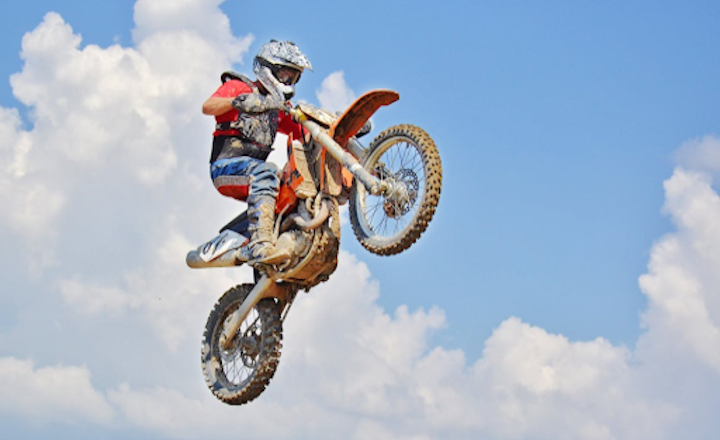
Dirt bike travel provides an exciting experience for adventure seekers and nature lovers. Navigating rocky hills, muddy paths, and dense forests challenges both body and mind, while the varied terrain keeps riders engaged. Nature lovers also enjoy access to remote, untouched areas typically out of reach.
While dirt bike travel promises a fun-filled adventure, it’s crucial to understand the importance of preparation for it, especially if you’re new to off-road riding. This is due to the unpredictable nature of off-road environments. Hence, lacking preparation can not only lead to inconvenience but can also put safety at risk.
But we’ve got you covered! This guide outlines key steps for planning your next dirt bike travel adventure, from choosing the right trails to packing essential gear.
Choose the Right Trails for Your Skill Level
Matching the terrain with your skill level is essential to avoid unnecessary challenges or dangers. Beginners should stick to well-maintained trails with gentle slopes and fewer obstacles, while experienced riders can tackle more challenging routes with steep inclines and rugged landscapes.
Choosing a trail suited to your experience ensures a safer and more enjoyable ride. You’ll also be able to focus on improving your riding skills while taking in the surroundings rather than worrying about navigating rugged terrain.
Additionally, ensure that your dirt bike parts, such as tyres and suspension, match your skill level and the terrain you plan to tackle. Beginners may benefit from lighter, more forgiving setups, while experienced riders might opt for more advanced dirt bike parts, like reinforced suspension or specialised off-road tyres, to easily handle more challenging trails.
Potential issues arise when riders overestimate their abilities or choose trails beyond their skill level. To avoid this, accurately assess your capabilities, research the trail, and consider gradually increasing the difficulty as you gain more confidence. Riding with others at a similar skill level can also provide added support and reduce the chances of getting in over your head.
Pack the Essential Gear
Packing the right gear can make or break your off-road expedition. Essential items include safety gear like trail-riding helmets, dirt bike goggles, body armour, gloves, and trail-riding boots. You’ll also need tools, spare dirt bike parts, a first aid kit, water, and snacks. For longer expeditions, you might want to consider additional gear like navigation devices or portable chargers to keep your phone or GPS running.
Having the right equipment increases your comfort and safety while you ride. Proper protective gear can prevent injury in case of a fall, while a well-stocked toolkit ensures you can handle minor repairs on the go. Being prepared also allows you to tackle unpredictable weather conditions, ensuring you stay hydrated and energised throughout your journey.
One of the biggest problems riders face is overpacking or forgetting essential items. To avoid this, make a checklist of what you’ll need based on the length and difficulty of the ride. Don’t overload your backpack with unnecessary items, but don’t leave out the essentials either. A well-balanced pack can keep you prepared without weighing you down.
Inspect Your Dirt Bike and Parts Before Departure
Before heading off-road, thoroughly inspect your dirt bike and its parts. Check everything from the tyres to the brakes, ensuring your bike is in top condition. Pay extra attention to dirt bike parts, such as chains, sprockets, and air filters, that might wear out quickly. The unpredictable nature of off-road riding can put extra stress on these components, so ensuring they’re in good shape before your trip is vital.
Conducting a proper inspection offers peace of mind and can prevent unexpected breakdowns while you’re in the middle of nowhere. You’ll avoid interruptions to your adventure and have more confidence that your bike can handle the challenging terrain. Plus, keeping spare parts on hand, such as an extra chain or tube, can be handy should any issues arise.
One potential issue is a mechanical failure during your ride. If that happens, it’s best to be prepared with the right tools and knowledge. Learn how to perform basic repairs, such as fixing a flat tyre or adjusting a loose chain, and carry a small toolkit with you. This will minimise downtime and ensure you can return to the trail quickly.
Ride with a Buddy or Group
Riding with a buddy or group can significantly enhance the safety and fun of your dirt bike travel. Whether you’re a beginner or an experienced rider, having others along ensures help is nearby if something goes wrong, from mechanical breakdowns to injuries. Plus, riding in a group offers a sense of camaraderie and shared excitement that can make the journey more enjoyable.
The benefits of riding with others include extra safety, better navigation, and support in unexpected situations. You’ll also have someone to share the adventure with, making the experience richer. Groups can help each other through tricky terrain and offer advice or encouragement when needed.
One downside to group riding is the potential for miscommunication or different pace preferences. Establish clear communication with your group before heading out to avoid these issues. Use hand signals or radios to stay in touch, and make sure everyone agrees on the pace and route before starting.
Final Thoughts
Preparation is key to ensuring a safe and enjoyable dirt bike travel experience. This post has covered essential tips, but it isn’t comprehensive. For more in-depth information or personalised advice, it’s worth doing additional research or seeking guidance from experienced riders.
| < Prev | Next > |
|---|





